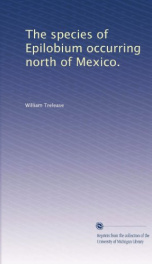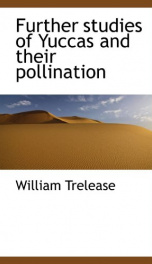the genus phoradendron

Purchase of this book includes free trial access to www.million-books.com where you can read more than a million books for free. This is an OCR edition with typos. Excerpt from book: II AEQUATORIALES. With cataphyls or scales constantly present toward the base of the branches, exceptionally cymosely dichotomous or forking without a per- current main stem. Spikes axillary and, in the cymose forms, terminal. Flowers in dioecious or monoecious unisexual spikes or, mostly, with staminate and pistillate flowers on the same spike. All are glabrous except for the small group Anomalae. Central in Brazil, extending from the Argentine to central Mexico and through the West Indies even to the northern Bahamas. Cataphyls on the basal joint only of each branch. Interruptae. Cataphyls on alternate joints. Paradoxae. Cataphyls on all joints. Continuae. D. INTERRUPTAE. Cataphyls strictly limited to the basal joint of each branch, the branches normally percurrent so that some joints occur without cataphyls. Throughout the range of the Aequatoriales. With foliage leaves. Foliosae. Leaves reduced to scales. Sqtiamosae. I. Foliosae. With foliage leaves. All are glabrous except for the group Anomalae. Throughout the range of the Aequatoriales. Leaves basinerved. Basinerviae. Leaves pinnately veined, never very narrow. Penninerviae. a. Basinerviae. Nerves starting from the base of the leaves, rarely joined for a short distance above the petiole, never with a pinnately branched midrib although the middle nerve may be stronger and more raised than the others. Glabrous throughout, though sometimes papillate. Leaves not clasping. Fruit elongated, with erect sepals. Longibaccae. Fruit round, ovoid, or ellipsoidal. Flowers prevailingly 2-ranked on each joint. Fruit tuberculate. Stem mostly sharply 4-angled. Leaves obovate. Of wide range. Emarginatae. Leaves elliptical or lance-oblong. Argentine. Argentinae. Stem not 4-angl...
Info about the book
Author:
Series:
Unknown
ASIN:
B004V48ZFS
Rating:
4/5 (3)Your rating:
0/5
Languge:
English
Users who have this book
Users who want this book
What readers are saying
What do you think? Write your own comment on this book!
write a commentGenre
if you like the genus phoradendron try:
Other books by this author
Do you want to read a book that interests you? It’s EASY!
Create an account and send a request for reading to other users on the Webpage of the book!






